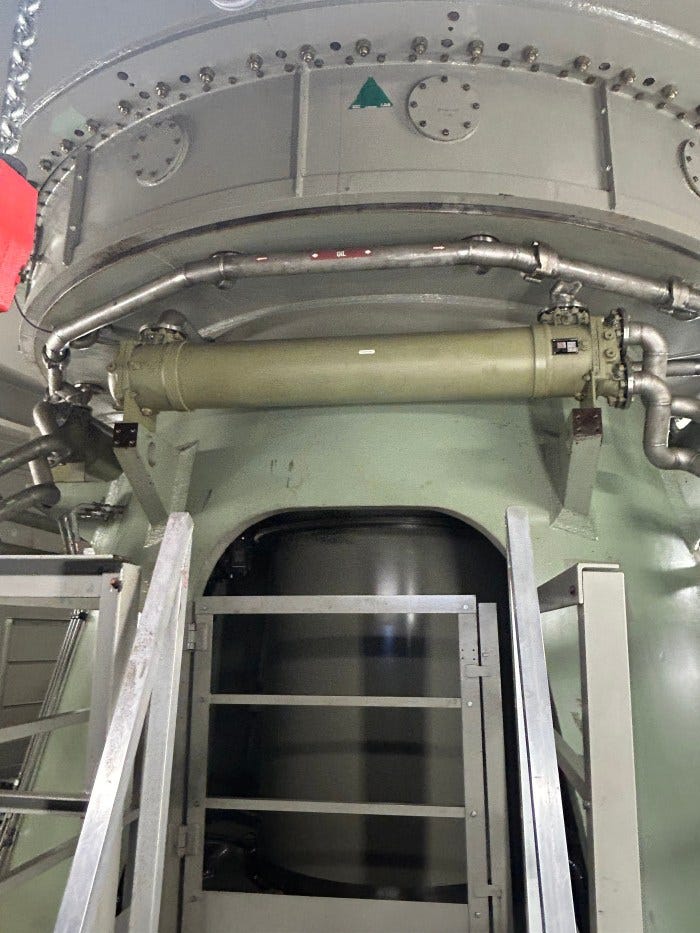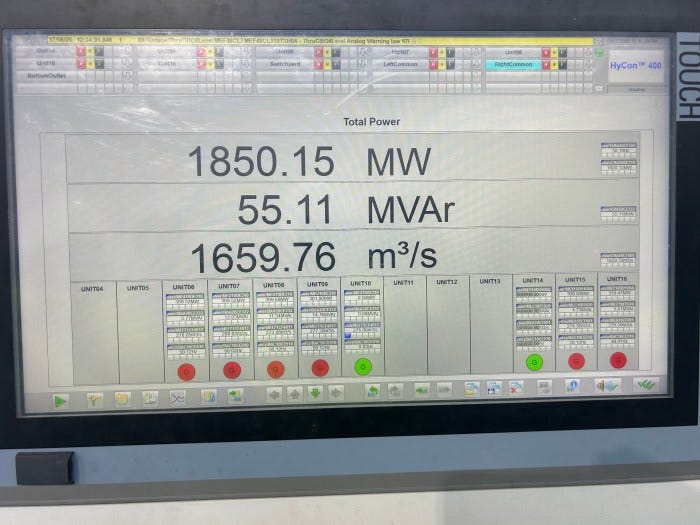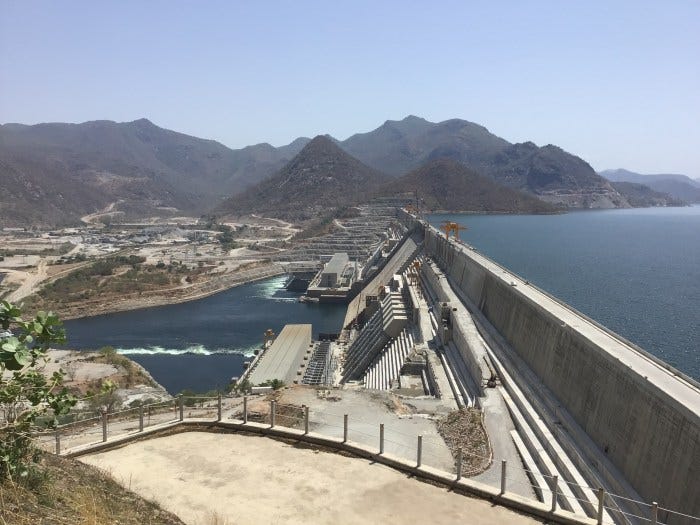
June 13, 2025
My visit to the Grand Ethiopian Renaissance Dam (GERD) on May 16, 2025, was truly a wonderful experience. I was filled with happiness and optimism that this magnificent water-power infrastructure complex was nearly finished. The GERD is to be inaugurated in September, becoming the largest hydro-electric dam in Africa and seventeenth in the world. Construction was initiated a little over a decade ago and will be completed at a cost of almost five billion dollars, funded by the Ethiopian people themselves. It will have the capacity to generate 5,150 megawatts (MW) of electricity by capturing the flow of the Blue Nile emanating from Lake Tana. Having first visited the GERD in December 2022; I was able to examine the progress over the last two and half years.
This marvelous accomplishment is not only a monument of the forward thinking, determination, and hard work by the Ethiopian people, but it serves as an example of future possibilities for all nations of Africa.
The full depth, and beauty of this man-made breathtaking edifice is hard to describe in words. The length of the dam is 1,780 meters, almost a mile. The height of the dam is 145 meters, 645 meters above sea level. Behind the main dam, just a few miles from the Sudanese border is the saddle dam, whose length is 5.2 kilometers and 50 meters high. Combined, they have a storage capacity of 74 billion cubic meters of water-60 million acre feet ,with a surface area of 1,874 square meters-724 square miles.
The GERD truly is a dam for development of the nations of the Nile Basin and beyond.
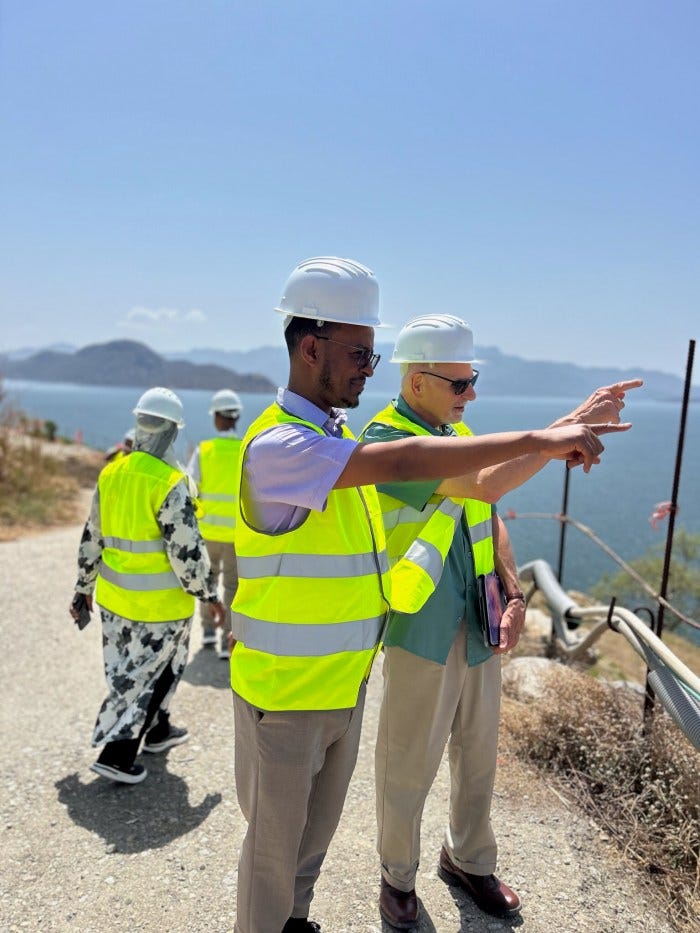
GERD Already Providing Electricity
The GERD has already begun the process of economic integration for East Africa by exporting electricity to its neighbors. Ethiopia is providing 80 MW to Djibouti, 200 MW to Kenya, 100 MW to Sudan, and is soon expected to sell 100 MW to Tanzania.
As more electricity is generated from the GERD and added to Ethiopia’s national grid, more power will be available for its economy and population, plus additional export of electricity to neighboring nations. Ethiopia’s urban centers have almost 100% electrification, while 45% of the population still lacks access to electricity, mainly in the rural areas. The goal of the government is to reach 100% access by the end of this decade. It is estimated that Ethiopia presently has the capacity to generate 7,000 MW of electricity including the partially completed installed capacity of GERD's 2600 MW. The GERD when all units are completed will increase that amount to 9,630 MW, making Ethiopia the second largest producer of electricity in sub-Saharan Africa, only behind South Africa, which has the solitary nuclear energy plant on the continent. However, there are estimates that Ethiopia has the potential to generate 45,000 MW of electricity.
When I explored the GERD in 2022, it had the capacity to produce 750 MW of electricity. Then, only two water ways were completed, delivering water from the reservoir at a flow rate of 330 cubic meters per second, which rotated each turbine 125 times per minute across a magnetic field, generating 375 MW. A great deal has changed over the last two plus years. All thirteen waterways, which are 8.5 meters wide, are fully constructed, as are all thirteen turbines. Seven turbines with the capacity of 2,600 MW are presently generating electricity; five turbines at 400 MW each and two at 300 MW. On the day that I was viewing the GERD, over 1,800 MW of electricity was being generated and transferred to the national grid. Over the months ahead six more turbines will be tested and brought online, bringing the total number of functioning turbines to thirteen.
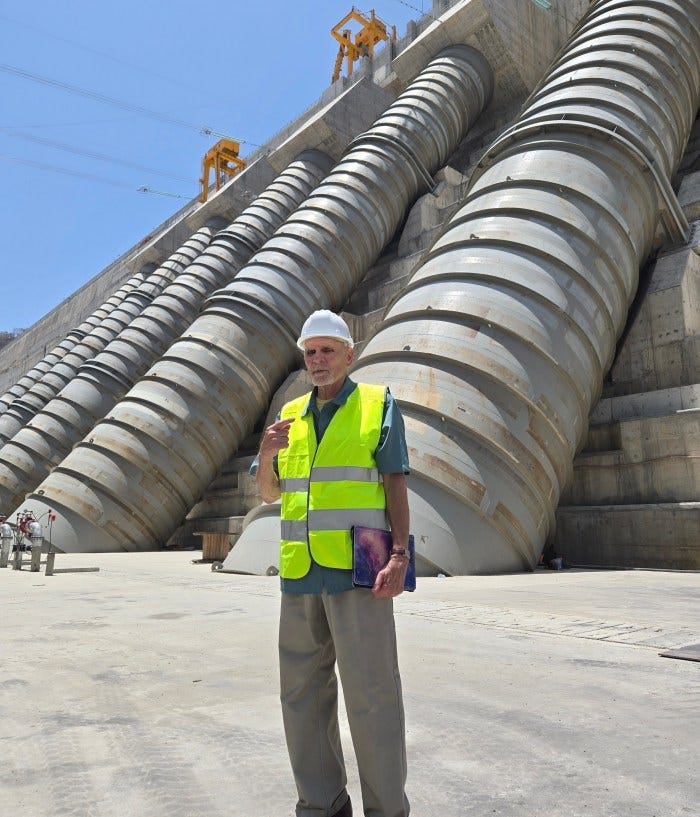
Egypt and Sudan Unharmed
Downstream, 2,670 kilometers-1,658 miles from the GERD, on the White Nile, is the Egyptian High Aswan Dam. For over a decade, Egypt has opposed the construction and operation of the GERD, claiming it would reduce the flow of water to its Aswan Dam, which produces electricity, control floods, and provides water for farming. It should be noted that the Egyptian population enjoys virtually 100% access to electricity. The GERD is strictly a hydro-electric dam; thus, all the water passes through, traveling north to Sudan where the Blue Nile joins the White Nile in Khartoum, and continues its journey to the Mediterranean Sea. The Egyptian government alleged that the filling of the GERD would reduce the volume of the Nile River to Sudan and the Aswan Dam. This did not happen. Yet, Egypt continues to protest the GERD’s operation even though the GERD will provide a continuous flow of water downstream that will prevent flooding and drying up of the White Nile. Additionally, the GERD has been constructed to provide a larger volume of Nile River water to the Aswan Dam than it would receive otherwise. Therefore, given that the Egyptian argument is fallacious, we should look to historical geopolitical motivations for its protestation. Why would Egypt attempt to prevent Ethiopia from utilizing its own water source to develop its own nation and other nations in need of electricity?
The Blue Nile Basin, which supplies 80% of the water to the White Nile, is rich with potential for development. According to a survey conducted by the United States Department of the Interior between 1957 to 1964, there are at least three more sites in the Blue Nile Basin where hydro-electric dams can be built.
Ethiopians Should Be Lauded
The significance of this accomplishment by the Ethiopian people over many years and successive governments is not fully understood by most people. Even the majority of world leaders fail to comprehend what has been achieved with the construction of the GERD. Lake Tana, and the meandering Blue Nile that finds its way to the White Nile, have been around for millions of years. It took the creativity and ingenuity of the Ethiopian people to exploit this geographical reality for the benefit of society’s existence.
Therefore, I will emphasize again what I have previously stated on numerous occasions.
The GERD is a potent demonstration of the power of human creativity, and humankind’s harmony with the physical universe. All infrastructure is the product of human intervention. We human beings alter the physical universe by creating improvements. This noetic-creative process of the mind is actually transforming our planet, and implicitly the universe, for the advancement of humankind.
My humble suggestion to the government of Ethiopia is: the day the Grand Ethiopian Renaissance Dam is officially inaugurated, should be known as GERD Day, to be honored along with Adwa Day. These two accomplishments, one on the battlefield, the other in engineering, represent a uniquely unifying identity of all Ethiopians, who have lived, who are living, and who are yet to be born.
Read below my earlier posts:
GERD: Utilizing the Blue Nile to Create Energy for Development in Ethiopia & The Horn of Africa
New Book on Ethiopia’s GERD: Historical Battle of the Nile-Colonialism vs Development
Lawrence Freeman is a Political-Economic Analyst for Africa, who has been involved in economic development policies for Africa for 35 years. He is a teacher, writer, public speaker, consultant on Africa, and an analyst of global strategic relations. Mr. Freeman strongly believes that economic development is an essential human right. He is the creator of the blog: lawrencefreemanafricaandtheworld.com, also publishes on: lawrencefreeman.substack.com, “Freeman’s Africa and the World, and on X @lkfreemansafrica




